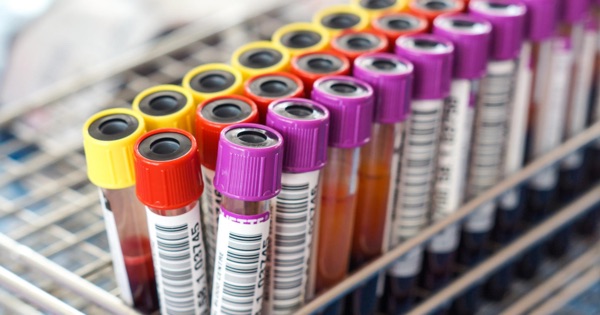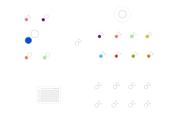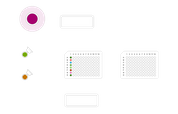or start from open source methods. Learn more about OneLab softwareUse OneLab
EpiQuik™ Circulating DNA Isolation

This example method provides a freely adjustable framework for measuring the adaptability of the OneLab environment to workflows from different application fields. It helps to understand various nuances of the code-free, universal protocol designer and provides general indications as to the feasibility of a project. Scripts generally require fine adjustment to correct for variables and support specific labware implementation.
Overview
Circulating Cell-Free DNA and Cancer
There is a growing interest today in studying the biology and characteristics of circulating cell-free DNA (ccfDNA) in liquid biopsies (e.g. plasma, serum) as a promising source of biomarkers for early diagnosis and monitoring of a wide range of diseases such as autoimmune disease, infections, cancer, and fetal disorders. Studies in cancer research have shown that ccfDNA molecules bear genetic and epigenetic mutations that are characteristic of the source tumor. ccfDNA molecules are released into blood circulation during apoptosis (programmed cell death) and mainly appear as fragments of ~166-170 bp representing mono-nucleosomes with a low proportion of larger nucleosomal complexes (di- or tri-nucleosomes). The amount of ccfDNA molecules in blood circulation was shown to be higher in cancer patients compared to healthy individuals. Therefore, a correlation exists between changes in the concentration and dynamics of ccfDNA and tumor development. The kinetic assessment of ccfDNA in blood circulation and profiling/quantification of detected cancer-associated mutations enables the screening of both healthy and at-risk asymptomatic individuals for the early detection and diagnosis of cancers. Moreover, it may provide multiple indications in clinical oncology including cancer staging, prognosis, tumor localization, as well as monitoring treatment efficiency and outcome. The valuable information gathered from the analysis of ccfDNA would then improve the care of patients at different stages of the disease and guide the selection of more targeted therapy. Although ccfDNA holds considerable promises as a cancer biomarker, many questions still need to be addressed for determining its molecular origin, physical properties, subtypes and the mechanisms involved in its release and clearance. Additionally, it is important to determine the biological role of ccfDNA in the pathology of cancer and the significance of its dynamics during the various phases of the disease and treatment, which may provide insights into the mechanisms involved in tumor development and malignancy.
Advantages of analyzing ccfDNA in Liquid Biopsy vs. Tissue Biopsy
In contrast with tumor biopsy, using liquid biopsy with ccfDNA as a routine non-invasive test for cancer diagnosis and treatment monitoring offers several benefits including the possibility to perform serial sampling and easy implementation with high-throughput, sensitive analytical techniques such NGS and quantitative PCR.
EpiQuikTM Circulating Cell-Free DNA Isolation Protocol
The EpiQuikTM Circulating Cell-Free DNA Isolation protocol provides a fast and simple procedure for selective isolation of small-size nucleosomal DNA (mainly mono-nucleosomal DNA, 170 bp in size) from plasma/serum samples. The DNA molecules derived from mono and/or di-nucleosomal complexes are efficiently captured using size-fractionation magnetic beads (ccfDNA Capture Beads). The captured nucleosomal DNA is then enzymatically released and purified using MQ Binding Beads through repetitive washing before elution. The procedure is automation-friendly since it does not involve any gel/column separation or centrifugation. It is scalable for single tube or 96-well plate formats and ensures efficient removal of interfering agents (proteins, salts, nucleases, and PCR inhibitors) as well as other impurities (polysaccharides, polyphenols, and lipids). The sensitivity of DNA capture results in optimal isolation with high recovery (>80% of input mono-nucleosomal DNA), even in conditions where a limited quantity of starting material is used (as low as 0.1 mL). The isolated DNA can be immediately stored or used for downstream applications in quantitative PCR or NGS DNA library preparation.
Regarding starting material, both fresh and frozen plasma/serum from various sources can be used. Nevertheless, it is recommended to use fresh samples to ensure higher DNA yields. Moreover, serum samples should be prepared within 6 hours after blood draw to avoid lysis of peripheral blood lymphocytes, which may cause an artificial increase in the amount of DNA during serum separation. The input volume of plasma/serum varies between 0.1-1 mL with a standard volume of 0.5 mL per sample.
Watch the video tutorial from Frontiers in Medicine about ccfDNA analysis and its potential clinical use as a non-invasive technique for early detection, enhanced treatment, and management of cancers
Learn more about EpiQuikTM Circulating Cell-Free DNA Isolation Kit
Protocols


Contact info

 This is an open access protocol distributed under the terms of the Creative Commons Attribution License, which permits unrestricted use, distribution, and reproduction in any medium, provided the original author and source are credited.
This is an open access protocol distributed under the terms of the Creative Commons Attribution License, which permits unrestricted use, distribution, and reproduction in any medium, provided the original author and source are credited. 